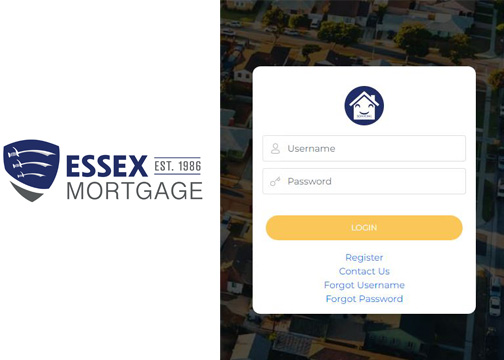What would you do when you got a sudden bill and don’t have the money or if you need money quickly? Knowing what difference between cash advance vs. payday loan is seems to be the best solution. In other words, it’s important to know what’s the difference between cash advance vs. payday loan which might be suitable for you before concluding.

Since cash advance vs. payday loan might be similar at first glance, what’s the difference between them depends on the features. They also offer a straightforward accessibility to funds and have a short term payment. However, a payday is more costly with an average annual percentage rate (APR) of 400% or more. Furthermore, to comprehend what’s the difference between cash advance vs. payday loan, you should know how they work and compare your choices to make the best decision.
What is Cash Advance
Cash advance is a specific kind of short term loan that’s usually offered by a credit card provider. Once you withdraw money from the provider, you receive an advance on your credit. Cash advance are valuable option that can be accessible and don’t need additional approval. All you need to do is to withdraw funds from an ATM or teller.
However, cash advance apps offer high interest rates and no grace period. This implies that you owe interest from day you borrow money, while most credit cards sales offer you few weeks before interest starts to accrue. They eventually become expensive as a result. They’re only a wise choice if you have quick repayment capacity.
Advantages and Disadvantages of Cash Advance
Just like any other kind of loan, cash advances have benefits and drawbacks. In addition, here’s a comparison of them.
Advantages
- Quick access to cash.
- Take out money with no credit check.
- No collateral.
- No interest and loan fee.
- Flexible repayment offered by credit card cash advances.
Disadvantages
- Fees associated with credit card cash advances increase the cost of borrowing money.
- A credit card cash advance may have interest rates that are higher than those on purchases.
- Credit card cash advances are immediately subject to interest charges.
- There may be lower borrowing limits on cash advance apps.
What is Payday Loan
Payday loan is a quick term loan usually ranges from $50 to $1,000 that mandates complete repayment within 14 days, by next paycheck. Payday loan limits can differ depending on where you reside, and many states have prohibit them because of their harsh terms and limitations. It costs might look low in terms of money, but they usually have a triple-digit annual percentage rate (APR) because of the short repayment period.
Moreover, payday loan charge interest rates of 400% or more. Lenders allow borrowers to roll over loans into new payday loans, resulting in additional fees and interest if they cannot repay the loan by the due date.
Advantages and Disadvantages of Payday Loan
Since payday loans have such high effective interest rates, they are frequently referred to as predatory loans. However, they might be a good borrowing choice in some circumstances. The advantages and disadvantages are as follow:
Advantages
- Quick access to low amount of money without a credit check.
- Lack of credit or bad credit does not prevent someone from borrowing.
- Get a bank account and a reliable job if you’re 18 years of age or older to be eligible.
- No collateral.
Disadvantages
- Compared to other loans or credit lines, effective interest rates can be significantly higher.
- Will not support in improving credit.
- If you decide to renew your loan rather than pay it off, it can be simple to fall into a debt cycle.
- Your bank account may be automatically debited for payments, which could result in overdraft fees.
Cash Advance vs. Payday Loan: What’s the Difference
According to some customers, a cash advance and payday loan offers a lot of similarities than what’s the difference. Both loan options provide quick, repaid loans with nearly guaranteed approval, ensuring quick cash in tight situations.
The following are some of the differences between payday loan vs cash advance:
Interest and fees
Payday loans are usually a more expensive option than cash advances because they usually have higher fees and interest rates. However, the cost of this type of borrowing has decreased due to the emergence of apps that offer cash advances at little or no cost, in contrast to conventional credit-card cash advances.
Flexibility
Occasionally, payday loans are short-term loans with set repayment terms that is due on your next payday. Although they have high interest rates, cash advances may allow you to repay the loan amount over time or in installments, giving you more repayment flexibility.
Benefits
Payday loans are a good option for borrowers who have a steady source of income and need money quickly. This is because they are easily accessible and straightforward. However, people who need money immediately and cannot wait for approval might find that cash advances are a better option.
Loan amount
Most times, payday lenders will lend you more money than you could be able to get in a cash advance. In addition, this is due to the fact that cash advances are only permitted to exceed your provider’s credit limit.
Lenders
Payday loans can originate from physical storefronts or payday lending apps, but cash advances are typically provided by credit card companies.
Cash Advance vs. Payday Loan: Which is Better
Generally, both cash advance apps and payday loan cannot be considered the best loan options since they are not affordable. You might be able to save enough cash if you receive financial support from a family member, friend, government programs or local communities. The APR on a credit card cash advance might also be lower.
However, cash advance apps are a better option for those without other borrowing options and not planning to borrow again due to their lower cost, even with additional fees. Additionally, they can offer you resources that will help you get out of a bad financial situation.





